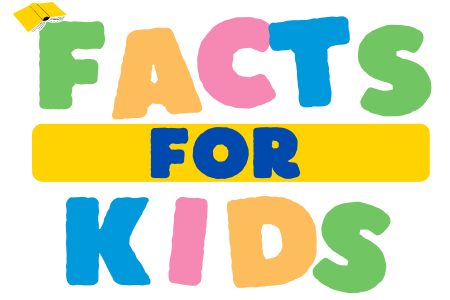Cryptography is a science that encrypts the information by making it invisible and secure. In Egypt, scrolls containing cryptography date back to approximately 1900 BC. Also, cryptography was used extensively by the Assyrians as well Chinese and Greeks. It is especially interesting for military people, and it has so many uses you can buy thesis on it and still not have the whole info.
While cryptography was sometimes in non-standard hieroglyphics, some were images combined with writing. Hebrew scribes invented the ATBASH substitution cipher (reversed-alphabet substitution) between 500 and 600 BC. The Polybius square was created by the Greeks. In later years, cryptography became a popular subject of study and many variations were made.
Codes to Teach Kids
Here are some great secret codes for kids. These codes are easy to teach, and your kids will love using them.
1. Morse Code
Morse Code is a secret language that uses dots, spaces, and dashes as symbols to identify letters, numerals, or punctuation marks. Every letter and every number has its own unique combination of dots or dashes. You can transmit the message by tapping on a surface with a flashlight or tapping on it. A dash has a three-fold longer duration than a dot.
You can get printouts from the Internet. Have your child memorize each sequence for different letters or numbers. Next, have them send the message to you in dots and dashes.
2. Pigpen cipher
The pigpen cipher, a substitution cipher, is simple. Each letter is paired up with a mathematical symbol in this cipher. It can be divided into two types of grids. One letter is placed in each slot.
You must substitute letters for the grid shape to transmit a message. This cipher can also be used as a fun way for your children to have fun.
3. International phonetic alphabet
The IPA (international phonetic Alphabet), also known under the NATO phonetic Alpha, has been used traditionally to send messages over the radio. This cipher might be seen in movies in which pilots from fighter planes and helicopters communicate with one another using IPA.
Each letter in this list is assigned a specific word. One example is A, which is Alpha, B, which is Bravo, and C, which is Charlie. To help your child say a specific word, they will need the IPA. You must also figure out the word. For example, BAT will require them to say Bravo Alpha Tango.
4. Tap code
The tap code, a variation on the Morse code, is one example. You can send a message to someone by tapping on a flat surface. Two numbers are assigned to each letter.
Use the number associated with each number to send a message. X is commonly used to stop a sentence or start a new paragraph. The letter K is equated the letter C.
To select the letter D you would tap once, then pause, and then tap again. If your message says “dog”, then the cipher will be
This code was widely used by prisoners to transmit information to one another.
5. Scytale
Scytale was developed by the Greeks to be used in cryptography. Transposition ciphers are used in this cipher for information transmission. All you need to do is create a long, narrow strip from paper and a circular object.
Place a strip of paper on top of the cylinder. A pencil works well. After writing a message, wrap the paper. The message will appear muddled. The other party will be able read the message if they roll the strip over a pencil the same size.
6. Grid code
A grid code can be one of your easiest codes to teach your child. Simply draw a grid that measures 5×5 feet and place the letters A through E on the left side. Then, add the numbers 1-5 to the top. Then fill the grid by inputting the alphabet letters. You can also place J and I in the same box.
Your children will be able to find the coordinates of the code by themselves.
For instance, “cake” could be coded as A3A1B5A5.
7. Numbers for Letters
The numbers-for–letters code is a good option if you need something simple for your young children. Instead of having children draw grids and symbols for letters, encourage them to use the numbers-for-letters code. For example, A = 1, B = 2, etc.
Create a small chart, write numbers instead of letters, and then let your children find the words and letters. This will be a great game for the kids.
8. Atbash cipher
The cipher works by substituting each letter from one end with its corresponding letter on the other. It was originally created in Hebrew, but was later transliterated into English. Z stands as A, Y is for B, X is for C, and the rest are in English. As you would normally write alphabet letters, you can also write them from left-to-right. Next, you write them from left-to right so that each letter lies beneath the one at the other end.
This cipher makes it very fun for children. They can use this code to transmit super-secret messages at their table.
9. Half-reversed alphabet
This variant of the reversed alpha can be used when you’re short on time. Divide the alphabet in to 13 groups with this cipher. Each letter of alphabet corresponds 13 places to the letter it follows or is just before.
An example of this is N and A. B stands out for O and O stands up for B. APPLE, therefore, will be NCCYR while ZBBA will now be MOON.
10. American Sign Language
ASL is a great way to send secret messages across the globe or through the window. ASL is similar in concept to teaching your child. After learning the basics, they can communicate with only their gestures.
ASL also allows your child the ability to communicate with others who have difficulty hearing. This will allow them to be more inclusive and can help them become better communicators. ASL communicators can also be highly in demand on the job marketplace.
11. Key cipher
Another way to communicate secret codes is by using this simple and effective method. To create a substitution cipher you will need to add a unique phrase or “key” at the beginning of your alphabet. You should omit letters from the “key”.
To illustrate, take the word “write” and add it to the key. Notice how letters in the “write” word do not appear again.
Now W stands as A, R stands as B, and I stands in for C. So, EKFLY is the cipher to use to spell the word “Enjoy”.
12. Caesar shift cipher
Caesar shift is named for Julius Caesar. Caesar was the one who invented this cipher to encrypt mails. It is a very simple cipher. All you need to know about it is the value for the rotation of the letters.
Each letter is shifted down two to three places in this cipher. Rotation is also known as ROT. ROT2 refers to A, D, and E. ROT3 is the opposite. D stands out for A, E for B, C stands, and C stands, respectively. F stands, for C.
13. Book code
Codes can be sent to children if they have the same book. After you have decided on a message, go through the book to find the words. On a piece of paper, write down the page number as well as the line and word numbers.
This code requires precision to decode. Both books must be from one publication.
14. The reverse alphabet codes
This is a simple code that you can share with your younger children. All you have to do is write the words backwards. If your children are still struggling to understand the code, they will need to take some time.
You can write, for example, “HAVE GREAT DAY” instead of “YAD TRAG A EVAH.” The spaces can even be removed to increase the challenge quotient.
15. Skip a letter code
This code allows you to skip all other letters to get to your message. This is a great method to send messages among friends as it makes it easy to share them with others.
Take a sentence and divide it into two halves. Put the odd-numbered letters in the left hand half of words. First, write the letter of the first group. Next, write the letter of second group. Write the next letter in each group. Then write the third letter of the first and second groups. So, for example, your sentence might be “SECRETCODES FOR KIDS,” and it will be encoded as “SREECTCEOSD FRO DDIS”.
These secret codes are for kids and will provide something for your children to chew on. Your children will have great fun devising new codes and ciphers to help you decode them. You’ll feel very proud of how clever they are. You can share these secrets codes with your children and allow them to enjoy the role of a secret agent.







